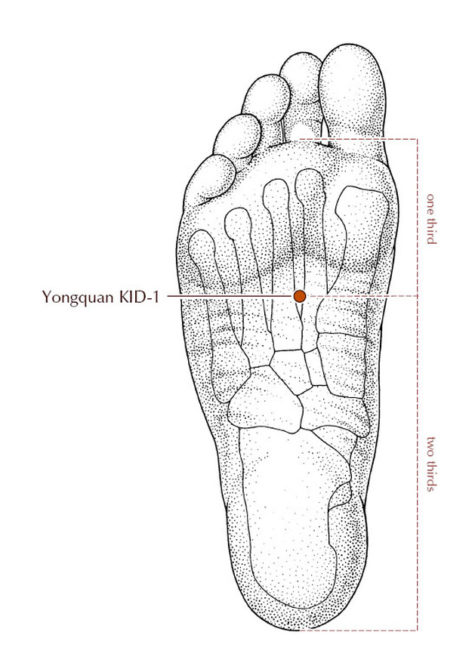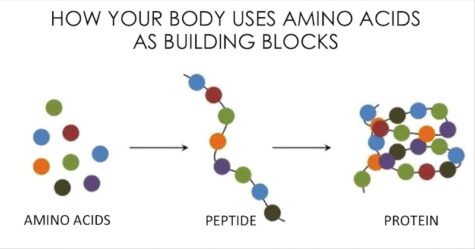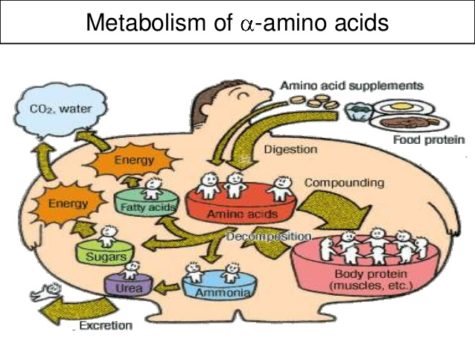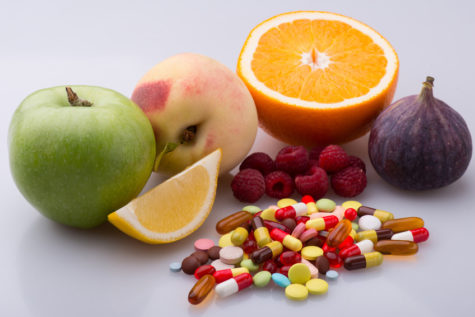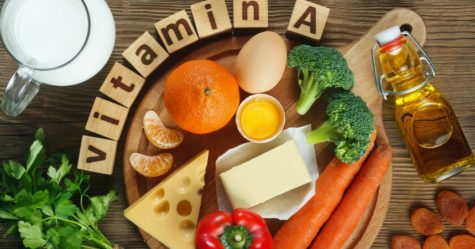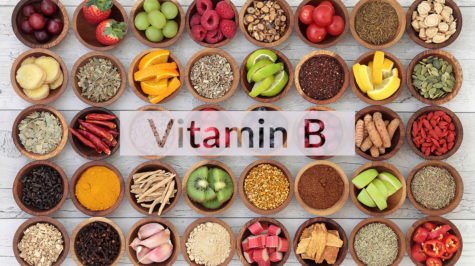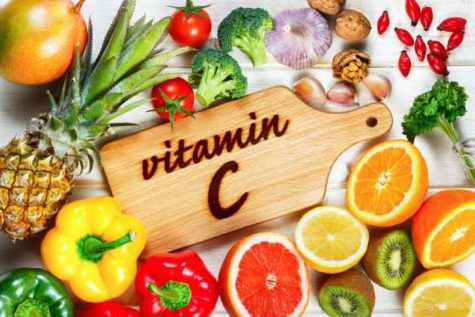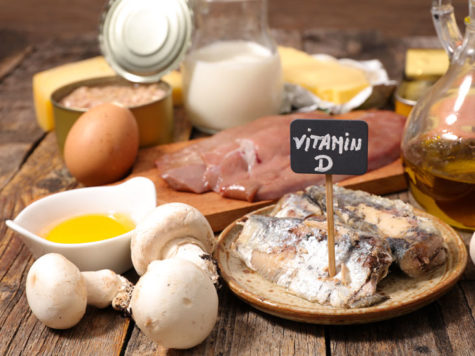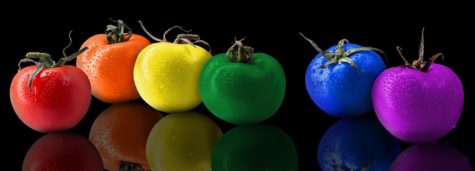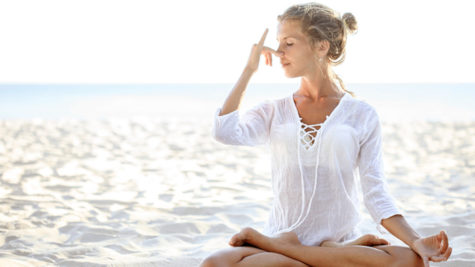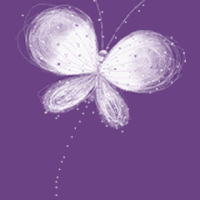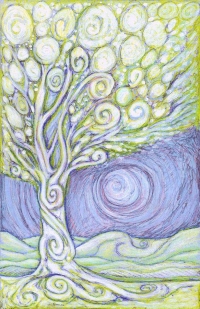All Purpose
How to Give Yourself a Relaxing Scalp Massage

Proper knowledge of the pressure points on head helps provide an extremely relaxing and effective method of getting rid of your migraine. It releases tension, increases blood circulation and enhances one’s mental state.
The following are steps for performing a scalp massage:
- First, find a place in your room that is comfortable and noise free. Take a seat at that spot.
- Next, place fingers of both hands on your forehead and let them touch each other at an imaginary midline and keep your thumbs rested on the temple.
- Apply firm but light pressure on the forehead and then release the pressure. Repeat this.
- Next shift your fingers along with the thumb further up your forehead towards the hairline region. Press again and release, and repeat the steps.
- Now move further up with your fingers on your scalp and keep pressing and releasing with your fingers.
- An acupressure point lies three quarters of the distance from your hairline up your scalp. Press your scalp at this point and release.
- Keep moving downwards towards your neck with your fingers and keep massaging various pressure points on head.
- Once you reach the base of your skull, move all the way back to the forehead again. This time place your fingers half an inch away from the imaginary midline of your forehead and work all the way up like earlier in this new position.
- Again get back to the forehead and this time place your fingers at an inch’s gap from the midline and work your way up.
Once you get used to this procedure, synchronize it with your breathing. Inhale while you press and exhale while you release.
Source: New Health Advisor
Acupressure For Your Feet
This might not be a pretty picture but it represents something amazing. The red dot graphic foot marks the Kidney One acupressure point on the Kidney Meridian. If you were to take a hold of your foot and place the thumb on that location, it would definitely relieve an aching foot.
What else can benefit from applying pressure to the Kidney One acupressure point?
- It can help regulate blood pressure
- Relieves dizziness and faintness
- Clears the mind
- Improve memory, concentration, and mental alertness
- It can help hot flashes
- Relieves anxiety
- Restores energy
- Increases general vitality in the body
So, maybe it’s time to press that red dot.
Source: Balanced Woman’s Blog
Raw Juice Therapy
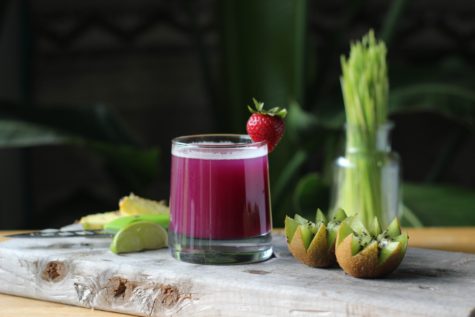
Raw juice therapy is a method of treatment of disease through an exclusive diet of juices of fruits and vegetables. It is also known as juice fasting. It is the most effective way to restore health and rejuvenate the body.
During raw juice therapy, the eliminative and cleansing capacity of the organs of elimination, namely lungs, liver, kidneys and the skin, is greatly increased and masses of accumulated metabolic waste and toxins are quickly eliminated. It affords a physiological rest to the digestive and assimilative organs.
After the juice fasting or raw juice therapy, the digestion of food and the utilization of nutrients is vastly improved. An exclusive diet of raw juices of fruits and vegetables results in much faster recovery from diseases and more effective cleansing and regeneration of the tissues than the fasting on pure water.
Dr. Ragnar Berg, a world-renowned authority on nutrition and biochemistry observes:
“During fasting the body burns up and excretes huge amounts of accumulated wastes. We can help this cleansing process by drinking alkaline juices instead of water while fasting.
I have supervised many fasts and made extensive examinations and tests of fasting patients, and I am convinced that drinking alkali-forming fruit and vegetable juices, instead of water, during fasting will increase the healing effect of fasting. Elimination of uric acid and other inorganic acids will be accelerated. And sugars in juices will strengthen the heart.
Juice fasting is, therefore, the best form of fasting. ”
As juices are extracted from plants and fruits, they process definite medicinal properties. Specific juices are beneficial in specific conditions. Besides specific medicinal virtues, raw fruit and vegetable juices have an extraordinary revitalizing and rejuvenative effect on all the organs, glands and functions of the body.
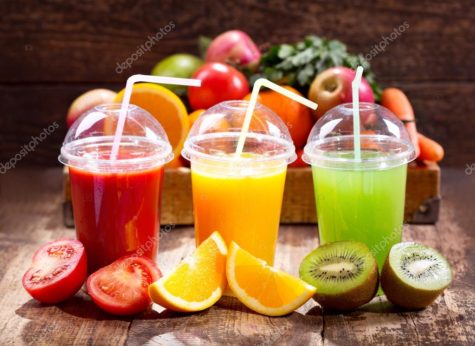
Favorable Effects
The favorable effect of raw juices in the treatment of disease is attributed to the following facts : Raw juices of fruits and vegetables are extremely rich in vitamins, minerals, trace elements, enzymes and natural sugars. They exercise beneficial effect in normalizing all the body functions. They supply needed elements for the body’s own healing activity and cell regeneration, thereby speeding the recovery.
- The juices extracted from raw fruits and vegetables require no digestion and almost all their vital nutrients are assimilated directly in the bloodstream.
- Raw juices are extremely rich in alkaline elements. This is highly beneficial in normalizing acid-alkaline balance in the blood and tissues as there is over-acidity in most conditions of ill-health.
- Generous amounts of easily assimilable organic minerals in raw juices especially calcium, potassium and silicon help in restoring biochemical and mineral balance in the tissues and cells, thereby preventing premature ageing of cells and disease.
- Raw juices contain certain natural medicines, vegetal hormones and antibiotics. For instance, string beans are said to contain insulin-like substance. Certain hormones needed by the pancreas to produce insulin are present in cucumber and onion juices. Fresh juices of garlic , onions, radish and tomatoes contain antibiotic substances.

Precautions
Certain precautions are, however, necessary in adopting an exclusive diet of raw juices. Firstly, all juices should be made fresh immediately before drinking. Canned and frozen juices should not be used. It will be advisable that one should have one’s own juicer for extracting fresh juices.
Secondly, only fresh ripe fruits and vegetables, preferably organically grown, should be used for extraction of juices.
Thirdly, only as much juice as needed for immediate consumption should be extracted. Raw juices oxidize rapidly and lose their medicinal value in storage, even under refrigeration.
Fourthly, the quality of the juices has a distinct bearing on the results obtained. In case of incomplete extraction of juices, their effective power is proportionately reduced due to the absence of the vitamins and enzymes which are left behind in fiber and the pulp.
Finally, if juices are too sweat they should be diluted in water on 50 : 50 basis or mixed with other less sweet juices. This is especially important in some specific conditions such as diabetes, hypoglycemia, arthritis and high blood pressure.
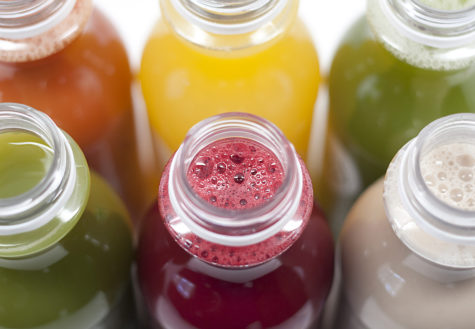
The Six Main Types of Juices
Fruit and vegetable juices may be divided into six main types. These are :
- Juices from sweet fruits such as prunes and grapes
- Juices from sub-acid fruits like apple, plum, pear, peach, apricot and cherry
- Juices from acid fruits like orange, lemon, grapefruit, strawberry and pineapple
- Juices from vegetable fruits, namely, tomato and cucumber
- Juices from green leafy vegetables like cabbage, celery, lettuce, spinach, parsley and watercress
- Juices from root vegetables like beetroot, carrot, onion, potato and radish. Generally speaking, fruit juices stir up toxins and acids in the body, thereby stimulating the eliminative processes.
Vegetable juices, on the other hand, soothe the jaded nerves and work in a much milder manner. They carry away toxic matter in a gentle way. Owing to their differing actions fruit and vegetable juices should not be used at the same time or mixed together. It is desirable to use juices individually. In any case not more than three juices should be used in any one mixture.
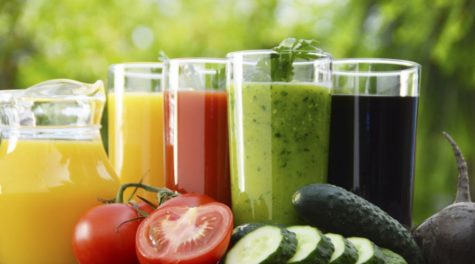
Rules For Mixing Juices
The following broad rules apply when using mixtures of juices. Juices from sweet fruits may be combined with juices of sub-acid fruits, but not with those of acid fruits, vegetable fruits or vegetables.
- Juices from sub-acid fruits may be combined with juices of sweet fruits, or acid fruits, but not with other juices.
- Juices from acid fruits may be combined with those of sub-acid fruits or vegetable fruits, but not with other juices.
- Juices from vegetable fruits may be combined with those of acid fruits or of green leafy vegetables, but not with other juices.
- Juices from green leafy vegetables may be combined with those of vegetable fruits or of the root vegetable, but not with other juices.
- Juices from root vegetables may be combined with those of green leafy vegetables, but not with other juices. A proper selection of juices in treating a particular ailment is very essential.
Thus, for instance, juices of carrot, cucumber, cabbage and other vegetables are very valuable in asthma, arthritis and skin disease, but juices of orange and mosambi aggravate their symptoms by increasing the amount of mucus.
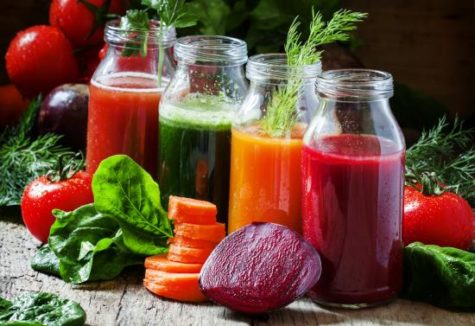
Treatment of Diseases
Some common ailments and fruit and vegetable juices found beneficial in their treatment are mentioned below :
- Acidity : Grapes, orange, mosambi, carrot and spinach.
- Acne : Grapes, pear, plum, tomato, cucumber, carrot, potato and spinach.
- Allergies : Apricot, grapes, carrot, beet and spinach.
- Arteriosclerosis : Grapefruit, pineapple, lemon, celery, carrot, lettuce, and spinach.
- Anemia : Apricot, prune, strawberry, red grape, beet, celery, carrot and spinach.
- Arthritis : Sour cherry, pineapple, sour apple, lemon, grapefruit, cucumber, beet, carrot, lettuce and spinach.
- Asthma : Apricot, lemon, pineapple, peach, carrot, radish and celery.
- Bronchitis : Apricot, lemon, pineapple, peach, tomato, carrot, onion and spinach.
- Bladder Ailments : Apple, apricot, lemon, cucumber, carrot, celery, parsley and watercress.
- Colds : Lemon, orange, grapefruit, pineapple, carrot, onion, celery and spinach.
- Constipation : Apple, pear, grapes, lemon, carrot, beet, spinach and watercress.
- Colitis : Apple, apricot, pear, peach, pineapple, papaya, carrot, beet, cucumber and spinach.
- Diabetes : Citrus fruits, carrot, celery, lettuce and spinach.
- Diarrhea : Papaya, lemon, pineapple, carrot and celery.
- Eczema : Red grapes,carrot, spinach, cucumber and beet.
- Epilepsy : Red grapes, figs, carrot, celery and spinach.
- Eye Disorders : Apricot ,tomato, carrot, celery, parsley and spinach.
- Gout : Red sour cherries, pineapple, tomato, cucumber, beet, carrot, celery and spinach.
- Halitosis : Apple, grapefruit, lemon, pineapple, tomato, carrot, celery and spinach.
- Headache : Grapes, lemon, carrot, lettuce and spinach.
- Heart Disease : Red grapes, lemon, cucumber, carrot, beet and spinach.
- High blood pressure : Grapes, orange, cucumber, carrot and beet.
- Influenza : Apricot, orange, lemon , grapefruit, pineapple, carrot, onion and spinach.
- Insomnia : Apple, grapes, lemon, lettuce , carrot and celery.
- Jaundice : Lemon, grapes, pear, carrot, celery, spinach, beet and cucumber.
- Kidney Disorders : Apple, orange, lemon, cucumber, cucumber,carrot, celery, parsley and beet.
- Liver ailments : Lemon, papaya, grapes, carrot, tomato, beet and cucumber.
- Menstrual Disorders :Grapes, prunes, cherry, spinach, lettuce turnips and beet.
- Menopausal Symptoms : Fruits and Vegetables in season.
- Neuritis : Orange, pineapple, apple, carrot and beet.
- Obesity : Lemon, grapefruit, orange, cherry, pineapple, papaya, tomato, beet, cabbage, lettuce, spinach and carrot.
- Piles : Lemon, orange, papaya, pineapple, carrot, spinach, turnip and watercress.
- Prostate Troubles : All fruit juices in season, carrot, asparagus, lettuce and spinach.
- Psoriasis : Grapes, carrot, beet, and cucumber.
- Rheumatism : Grapes, orange, lemon, grapefruit, tomato, cucumber, beet, carrot and spinach.
- Stomach Ulcers : Apricot, grapes, cabbage and carrot.
- Sinus Trouble : Apricot, lemon, tomato, carrot, onion and radish.
- Sore Throat : Apricot, grapes, lemon, pineapple, prune, tomato, carrot and parsley.
- Tonsillitis : Apricot, lemon, orange, grapefruit, pineapple, carrot, spinach and radish.
- Varicose Veins : Grapes, orange, plum, tomato, beetroot carrot and watercress.
When on a raw juice therapy, the prescribed juice should be drunk every three hours. One can thus take juices five to six times a day. A glass of water mixed with lemon juice and 20 to 30 grams of honey may be taken first thing in the morning on arising. Thereafter, the prescribed juice may be taken at three-hourly intervals.
The quantity of juice on each occasion may be 250 ml on the first day. This quantity may be increased by 50 ml each succeeding day till one takes 600 ml on each occasion. The juice diet can be continued for 30 to 40 days without any ill-effects.
The patient should take adequate rest during the raw juice therapy. Raw juices act as a cleansing agent and start eliminating toxins and morbid matter from the system immediately. This often results in symptoms such as pain in the abdomen, diarrhea, loss of weight, headache, fever, weakness, sleeplessness and bad breath.
These reactions, which are part of the cleansing process, should not be suppressed by the use of drugs. They will cease when the body is able to expel all toxins. After the raw juice therapy, the return to normal balanced diet should be gradual, and in stages. In the beginning, two juice meals may be replaced by milk and fruits. Then gradually juice meals may be substituted by a balanced-diet.
The Amazing Power of Amino Acids
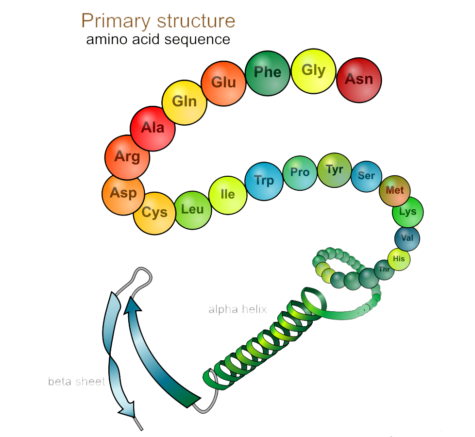 In 1838, a Dutch chemist, G.J. Mulder, described a certain organic material as “unquestionably the most important of all known substances in the organic kingdom. Without it, no life appears possible on our planet. Through its means the chief phenomena of life are produced. ” This complex nitrogen-bearing substance was called protein from the Greek word meaning ” take the first place.”
In 1838, a Dutch chemist, G.J. Mulder, described a certain organic material as “unquestionably the most important of all known substances in the organic kingdom. Without it, no life appears possible on our planet. Through its means the chief phenomena of life are produced. ” This complex nitrogen-bearing substance was called protein from the Greek word meaning ” take the first place.”
Protein is now a group name signifying the principal nitrogenous constituents of the protoplasm of all plant and animal tissues. Proteins are extremely complex organic compounds of the elements carbon, hydrogen, oxygen, nitrogen, and,with some exceptions, sulfur. Most proteins also contain phosphorous, and some specialized proteins contain iron, iodine, copper and other inorganic elements.
The presence of nitrogen distinguishes proteins from carbohydrates and fats. Proteins are thus vital substances, which form important constituent of muscles, tissues, and the blood. Proteins supply the building material for the body and make good the wear and tear of tissues. Several substances concerned with vital life processes such as enzymes, which help in digestion of food, are chiefly protein in nature.
There are several varieties of protein. Each type contains a specific number of “building blocks ” known as amino-acids. Before they can be absorbed by the body, all proteins must first be broken down into amino-acids. When food stuffs are ingested, the nutrients and amino-acids do not immediately diffuse into all the different tissues. There are a series of biochemical reactions in the digestive tract which collect these proteins, break them down and then utilize them as needed. Any interference with the normal digestive process causes in-complete protein digestion resulting in gas, bloating etc.
There are about 22 amino acids needed for the normal functioning of the body. The body can manufacture many amino acids if it has no adequate nitrogen source, but it cannot produce certain others in sufficient amounts to meet its needs. The amino acids that the body cannot synthesize in adequate amounts are called essential or indispensable because they must be supplied by the diet in proper proportions and amounts to meet the requirements for maintenance of growth. Non-essential or dispensable amino acids are those that the body can synthesize in sufficient amounts to meet its needs if the total amount of nitrogen supplied by protein is adequate.
Classification of Amino Acids with respect to their essentiality:
Essential Amino Acids
- Histidine*
- Isoleucine
- Leucine
- Lysine
- Methionine
- Phenylalanine
- Theronine
- Trypophan
- Valine
- Hydroxyproline
- Proline
- Serine
- Tyrosine
*Histidine is required for infants but its essentiality for adults has not been clearly established.
Nonessential Amino Acids
- Alanine
- Arginine
- Asparagine
- Aspartic acid
- Cysteine
- Cystine
- Glutamic acid
- Glutamine
- Glycine
It will be seen from this statement that nine amino acids are essential for maintenance of nitrogen equilibrium in human bodies. The estimated requirements of essential amino acids for infants, children and adults are given below. Men in the older age group appear to differ in their requirements. Studies seem to suggest an increase need for methionine and lysine for them. Infants and children have proportionally greater demands for essential amino acids than adults. In addition, infants require histidine as an essential amino acid.
Daily Requirements:
Estimating the daily requirement for the indispensable amino acids has proven to be difficult; these numbers have undergone considerable revision over the last 20 years. The following table lists the WHO and United States recommended daily amounts currently in use for essential amino acids in adult humans, together with their standard one-letter abbreviations.
| Amino acid(s) | WHO mg per kg body weight | WHO mg per 70 kg | US mg per kg body weight |
|---|---|---|---|
| H Histidine | 10 | 700 | 14 |
| I Isoleucine | 20 | 1400 | 19 |
| L Leucine | 39 | 2730 | 42 |
| K Lysine | 30 | 2100 | 38 |
| M Methionine+ C Cysteine | 10.4 + 4.1 (15 total) | 1050 total | 19 total |
| F Phenylalanine+ Y Tyrosine | 25 (total) | 1750 total | 33 total |
| T Threonine | 15 | 1050 | 20 |
| W Tryptophan | 4 | 280 | 5 |
| V Valine | 26 | 1820 | 24 |
The recommended daily intakes for children aged three years and older is 10% to 20% higher than adult levels and those for infants can be as much as 150% higher in the first year of life. Cysteine (or sulfur-containing amino acids), tyrosine (or aromatic amino acids), and arginine are always required by infants and growing children.
Factors in addition to the age, sex and physiological condition of an individual influence the requirements for specific amino acids. If total protein intake is low, small surpluses of certain amino acids can increase the need for others.
The non-essential amino acids in protein also affect the quality of protein. For example, the amount of sulphur – containing essential amino acid methionine required may be somewhat reduced if cystine, a sulfur-containing nonessential amino acid,is supplied in the diet. Likewise, the presence in the diet of tyrosine, a non-essential amino acid similar in structure to phenylalanine, may reduce the requirement for phenylalanine.
Much research has been done on amino acids in recent times and this has paved the way for dramatic treatment and cure of different problems by their judicious use. They are now dubbed as ” the nutrients of the 80’s” and “medical foods”.
The various functions of the essential and frequently investigated non-essential amino acids, their deficiency symptoms and their therapeutic uses are discussed below :
Tryptophan
Of all the essential amino acids , tryptophan is the one that is most investigated by nutrition researchers. It is essential to blood clotting, digestive juices and the optic system. It induces sleep and quietens the nervous system. It wards off signs of premature old age – cataracts of the eyes, baldness, deterioration of sex glands and malformation of teeth enamel. It is also necessary to the female reproductive organs and for proper utilization of vitamin A by the body.
Major sources of this amino acid are nuts, and most vegetables.
Lack of tryptophan causes symptoms similar to those of vitamin A deficiency. A number of scientists feel that it can be used as a safe and effective food remedy for insomnia and pain. Under experimental conditions, tryptophan in doses of one gram or more has been shown to be most effective for persons who suffer from mild insomnia and for those who take a long time to fall asleep.
Tryptophan may also be a natural painkiller. Researches at Temple University in Philadelphia have indicated that it worked without causing the side effects associated with other anesthesia or analgesics. Tryptophan as a food medicine should be taken between meals with a low protein food such as fruit juice or bread. One to three grams a day seems to be the range favored by most researchers.
Methionine
This is a vital sulphur -bearing compound which helps dissolve cholesterol and assimilates fat. It is required by haemoglobin, the pancreas , the lymph and the spleen. It is necessary to maintain normal body weight and also helps maintain the proper nitrogen balance in the body.
Rich sources of methionine are Brazil nut, Hazal nut, and other nuts. It is also found in brussel sprouts, cabbage, cauliflower, pineapples and apples. Its deficiency can lead to chronic rheumatic fever in children, hardening of the liver (cirrhosis) and nephritis of the kidneys. Studies show that methionine and chorine prevent tumours and proliferation.
Lysine
Lysine inhibits viruses. Its use along with vitamin C, zinc and vitamin A helps eliminate virus infections. Vitamin C protects this amino acid while in the body so that lysine plus vitamin C has a much stronger anti-virus effect than if either is used separately. Lysine also influences the female reproductive cycle.
Lack of adequate lysine in the diet may cause headaches, dizziness, nausea and incipient anemia. The main sources of this amino acid are most kinds of nuts, seeds, vegetables and sub-acid fruits. Lysine upsets in the body have also been associated with pneumonia, nephrosis and acidosis as well as malnutrition and rickets in children.
It is considered a natural remedy for cold, sores, shingles and genital herpes. In a study published in 1983, a group of researchers polled over 1,500 people whose daily intake of lysine was over 900 mg. 88 per cent said that lysine seemed to reduce the severity of their attacks of herpes virus and accelerated the healing time. These results have, however, been disputes by some scientists.
Valine
Valine is an essential body growth factor, particularly for mammary glands and ovaries. Valine is directly linked with the nervous system. It is essential for the prevention of nervous and digestive disorders.
Major sources are almonds, apples and most vegetables. Lack of this amino acid makes a person sensitive to touch and sound.
Isoleucine and Leucine
This amino acid is essential for maintaining the nitrogen balance vital to all body functions. It also regulates metabolism of the thymus, spleen and pituitary glands. Rich sources are sunflower seeds, all nuts, except cashew nuts, avocados and olives.
Leucine is the compliment of isoleucine, with a similar chemical composition although in different arrangement. Its functions and sources are also similar.
Phenylalanine
This is essential to the production of hormone adrenaline; to the production of the thyroid secretion and the hair and skin pigment, melanin.
It is effective in weight control because of its effect on the thyroid. Its use before meals suppresses the appetite substantially. Patients taking half a teaspoon of the powder 30 minutes before each meal, lose from a quarter to half a pound a day. It is also essential for the efficient functioning of kidneys and bladder.
Major source are nuts, seeds, carrots, parsley and tomatoes. An important recently discovered therapeutic use of phenylalanine is its ability to overcome most conditions of lethargy through stimulation of adrenaline.
Throenine
This amino acid is found in various types of milk and is a major constituent in cow’s milk. Other sources are nuts, seeds, carrots and green vegetables. Without threonine, a child’s development will be incomplete and there will be malfunctioning of the brain. This amino acid has a powerful anti-convulsive effect.
Histidine
This helps tissue growth and repair. It is active in producing normal blood supply. It is also vital to the formation of glycogen in the liver. It is found in the root vegetables and all green vegetables.
Studies indicate that the free form of histidine in the blood is low in cases of rheumatoid arthritis and if taken orally, may possibly depress the symptoms of this ailment. Oral histidine has , however, a tendency to stimulate hydrochloric acid secretion in the stomach and persons who are susceptible to an overabundance of acid and also those who have ulcers should avoid taking pure histidine.
Orthopaedic and joint pains are caused by lack of histidine.
Arginine
This is called the ” fatherhood ” amino acid as it comprises 80 per cent of all male reproductive cells. It is essential for normal growth. Serious lack of this amino acid reduces the sex instinct causing impotence. It is found in most vegetables, especially, green and root vegetables.
Cystine
Cystine provides resistance by building up white-cell activity. It is an indispensable amino acid. It is one of the mainstays of health as it is essential for the proper formation of skin and helps one recover from surgery.
It promotes the formation of carolene which helps hair growth. It is used in the treatment of skin diseases, for low white blood-cells counts and for some cases of anemia.
Tyrosine
This can be called an anti-stress amino acid. Dr. Richard Wurtman who recently conducted experiments on the use of this amino acid says: ” Supplemented tyrosine may be useful therapeutically in persons exposed chronically to stress. ”
Tyrosine is also beneficial for depression, nervousness, irritability and despondency. Research has established this amino acid to be effective in the management and control of depression in conjunction with glutamine, tryptophan, niacin and vitamin B6. It is also helpful in the treatment of allergies and high blood pressure.
Although individual nee may vary, Dr. Wurtman considers 100 mg. per kilogram of body weight per day an optional dose. This works out to about 5.4 grams of tyrosine a day for a person weighing 120 pounds. The supplement may be divided into three separate doses each day. When tyrosine is taken, a supplement of valine, another essential amino acid should not be taken as valine may block tyrosine’s entry to the brain.
Glutamine
This little known non-essential amino acid known as ” sobriety nutrient ” . It is considered beneficial in the treatment of alcoholism. According to Roger J. Williams , a world-known nutritionist, glutamine reduces the usually irresistible craving for alcohol that recovering drinkers almost inevitably encounter.
Cysteine
There is some evidence that cysteine (not to be confused with cystine) has certain therapeutic value as a nutritional supplement.
Dr. H. Ghadimi, chairman of the nutrition committee at Nassau country, (New York) medical center uses cysteine supplements to treat his patients suffering from obesity. He considers that there is link between obesity and over-production of insulin and that cysteine supplements taken along with vitamin C at the end of the meals somehow neutralizes some of the excess insulin, which is responsible for fat production.
He regards this amino acid as ‘ anti-cancer and anti-ageing’ and claims that like vitamin C, cysteine protects the body from damage by oxidants.
Amino Acid Deficiencies
When one or more of the essential amino acids are left out of the diet, symptoms similar to those of vitamin deficiencies may be experienced such as low blood pressure, anemia, poor muscle tone, slow healing of wounds, loss of weight, poor resistance to infections and bloodshot eyes. Children who do not get the required amounts of amino acids in their daily diet suffer from stunted growth and permanent damage to the glands.
On the other hand, those getting the full quota of amino acids in their diet will be rewarded with vigor, vitality and long life.
The best food proteins with all the essential amino acids are found in almonds, cheese and eggs. Amino acids are being increasingly and successfully used in the treatment of several diseases, such as stomach ulcers, burns, kidney diseases and liver diseases.
It has also been observed that the diseases of old age can be largely prevented if elderly persons obtain the proper food supplements of amino acids , vitamins and minerals. Amino acids are needed at every stage from infancy to old age – to repair worn out tissues and to create new ones.
The Importance of Minerals

The term ‘ minerals ‘ refers to elements in their simple inorganic form. In nutrition they are commonly referred to as mineral elements or inorganic nutrients. Minerals are vital to health. Like vitamins and amino acids, minerals are essential for regulating and building the trillions of living cells which make up the body. Body cells receive the essential food elements through the blood stream. They must, therefore, be properly nourished with an adequate supply of all the essential minerals for the efficient functioning of the body.
Minerals help maintain the volume of water necessary to life processes in the body. They help draw chemical substances into and out of the cells and they keep the blood and tissue fluid from becoming either too acidic or too alkaline.
The importance of minerals, like vitamins, is illustrated by the fact that there are over 50,000 enzymes in the body which direct growth and energy and each enzyme has minerals and vitamins associated with it. Each of the essential food minerals does a specific job in the body and some of them do extra work, in teams, to keep body cells healthy.
The mineral elements which are needed by the body in substantial amounts are calcium, phosphorous, iron, sulfur, magnesium, sodium, potassium and chlorine. In addition the body needs minute (trace) amounts of iodine, copper, cobalt, manganese, zinc, selenium, silicon, fluorine and some others.
-
Calcium
The human body needs calcium more than any other mineral. A man weighing 70 kg. contains one kg. of calcium. About 99 per cent of the quantity in the body is used for building strong bones and teeth and the remaining one per cent is used by the blood, muscles and nerves.
Calcium performs many important functions. Without this mineral , the contractions of the heart would be faulty, the muscles would not contract properly to make the limbs move and blood would not clot. Calcium stimulates enzymes in the digestive process and coordinates the functions of all other minerals in the body.
Calcium is found in milk and milk products, whole wheat, leafy vegetables such as lettuce, spinach, and cabbage , carrots, watercress, oranges, lemons, almonds, figs and walnuts. A daily intake of about 0.4 to 0.6 grams of calcium is considered desirable for an adult. The requirement is larger for growing children and pregnant and lactating women.
Deficiency may cause porous and fragile bones, tooth decay, heart palpitations, muscle cramps, insomnia and irritability. A large increase in the dietary supply of calcium is needed in tetany and when the bones are decalcified due to poor calcium absorption, as in rickets, oesteomalacia and the mal-absorption syndrome. Liberal quantity of calcium is also necessary when excessive calcium has been lost from the body as in hyperparathyroidism or chronic renal disease.
-
Phosphorus
It combines with calcium to create the calcium-phorphorus balance necessary for the growth of bones and teeth and in the formation of nerve cells. This mineral is also essential for the assimilation of carbohydrates and fats. It is a stimulant to the nerves and brain. Phosphorous is found in abundance in cereals, pulses, nuts, egg yolk, fruit juices, milk and legumes. Usually about one gram of phosphorous is considered necessary in the daily diet.
A phosphorous deficiency may bring about loss of weight, retarded growth, reduced sexual powers and general weakness. It may result in poor mineralization of bones, deficient nerve and brain function.
While taking calcium in therapeutic doses for calcium deficiency conditions or for treating ailments, it is advisable to take the calcium supplement in which phosphorous has been added in the correct proportions. This is necessary as calcium cannot achieve its objectives unless phosphorous is present in a proper balance.
-
Iron
Iron is an important mineral which enters into the vital activity of the blood and glands. Iron exists chiefly as hemoglobin in the blood. It distributes the oxygen inhaled into the lungs to all the cells. It is the master mineral which creates warms, vitality and stamina. It is required for the healthy complexion and for building up resistance in the body.
The chief sources of iron are grapes, raisins, spinach, all green vegetables, whole grain, cereals, dried beans, dark colored fruits, beets, dates, liver and egg yolk. The Indian Council of Medical Research has recommended an allowance of 20 to 30 mg. of iron in a balanced diet for an adult.
Iron deficiency is generally caused by severe blood loss,malnutrition , infections and by excessive use of drugs and chemicals. Deficiency of dietary iron may cause nutritional-anemia, lowered resistance to disease, a general run down condition, pale complexion, shortness of breath on manual exertion and loss of interest in sex.
Iron is the classic remedy for anemia. However, there are several forms of anemia, and iron deficiency anemia is only one. If one is taking iron pills due to insufficient intake of iron in the normal diet, one should also take at least 40 mg. of folic acid or folate every day, along with 10 to 25 mg. of vitamin B12. Both these vitamins are essential in building healthy blood cells.
-
Sulphur
All living matter contains some sulphur; this element is therefore essential for life. The greater part of the sulphur in the human body is present in the two sulphur-containing amino acids, methionine and cysteine, or in the double form of the latter cystine.
The main purpose of sulphur is to dissolve waste materials. It helps to eject some of the waste and poisons from the system. It helps keep the skin clear of blemishes and makes hair glossy. It is also valuable in rheumatic conditions.
The main sulphur-containing foods are radishes, carrots, cabbage, cheese, dried beans, fish and eggs. There is no recommended dietary allowance. But a diet sufficient in protein will generally be adequate in sulphur.
Deficiency of sulphur may cause eczema and imperfect development of hair and nails. Sulphur creams and ointments have been remarkably successful in treating a variety of skin problems.
-
Magnesium
All human tissues contain small amounts of magnesium. The adult human body contains about 25 gms. of this mineral. The greater part of this amount is present in bones in combination with phosphate and carbonate. Bone ashes contain less than one per cent magnesium. About one-fifty of the total magnesium in the body is present in the soft tissues, where it is mainly bound to protein.
Next to potassium, magnesium is the predominant metallic action in living cells. The bones seem to provide a reserve supply of this mineral in case of shortage elsewhere in the body. Biochemists call magnesium the “cool, alkaline, refreshing, sleep-promoting mineral”. Magnesium helps one keep calm and cool during the sweltering summer months. It aids in keeping nerves relaxed and normally balanced. It is necessary for all muscular activity.
This mineral is in activator for most of the enzyme system involving carbohydrate, fat and protein in energy-producing reactions. It is involved in the production of lecithin which prevents building up of cholesterol and consequent atherosclerosis. Magnesium promotes a healthier cardiovascular system and aids in fighting depression. It helps prevent calcium deposits in kidneys and gallstones and also brings relief from indigestion.
Magnesium is widely distributed in foods. It is a part of the chlorophyll in green vegetables. Other good sources of this mineral are nuts, soy beans, alfalfa, apples, figs, lemons, peaches, almonds, whole grains, brown rice, sunflower seeds and sesame seeds.
The recommended dietary allowances for magnesium are 350 mg. per day for adult man, 300 mg. for women and 450 mg. during pregnancy and lactation.
Deficiency can lead to kidney damage and kidney stones, muscle cramps, arteriosclerosis, heart attack, epileptic seizures, nervous irritability, marked depression and confusion, impaired protein metabolism and premature wrinkles. Chronic alcoholics often show a low plasma magnesium concentration and a high urinary output. They may, therefore, require magnesium therapy especially in an acute attack of delirium tremens.
Magnesium has also proved useful in bladder and urinary problems and in epileptic seizure. This mineral together with vitamin B6 or pyridoxine has also been found effective in the prevention and treatment of kidney stones. Magnesium can be taken in therapeutic doses up to 700 mg. a day.
-
Sodium
Sodium Chloride , the chemical name for common salt, contains 39 per cent of sodium, an element which never occurs in free form in nature. It is found in an associated form with many minerals especially in plentiful amounts with chlorine. The body of a healthy person weighing about 65 kg. contains 256 g. of sodium chloride. Of this the major part, just over half, is in the extra-cellular fluid. About 96 g. is in bone and less than 32 g. in the cells.
Sodium is the most abundant chemical in the extra-cellular fluid of the body. It acts with other electrolytes, especially potassium, in the intracellular fluid, to regulate the osmotic pressure and maintain a proper water balance within the body. It is a major factor in maintaining acid-base equilibrium, in transmitting nerve impulses, and in relaxing muscles. It is also required for glucose absorption and for the transport of other nutrients across cell membranes.
Sodium can help prevent catarrh. It promotes a clear brain, resulting in a better disposition and less mental fatigue. Because of its influence on calcium, sodium can also help dissolve any stones forming within the body. It is also essential for the production of hydrochloric acid in the stomach and plays a part in many other glandular secretions.
There is some natural salt in every food we eat. Vegetable foods rich in sodium are celery, cucumbers, watermelon, lemons, oranges, grapefruit, beet-tops, cabbage, lettuce, corn, lady’s fingers, apple, berries, pears, squash, pumpkin, peaches, lentils, almonds and walnuts. Animal food sources include shell fish, lean beef, kidney, bacon and cheese.
The sodium chloride requirements for persons living in the tropics have been estimated at 10 to 15 g. per day for adults who are engaged in light work and 15 to 20 g. for those engaged in hard work. The requirements of children are from five to 10 g. and those for adolescent boys and girls from 10 to 25 g.
Both deficiency and excess of salt may produce adverse effects o the human body. Deficiencies of sodium are, however, rare and may be caused by excessive sweating, prolonged use of diuretics, or chronic diarrhea. Deficiency may lead to nausea, muscular weakness, heat exhaustion, mental apathy and respiratory failure.
Over-supply of sodium is a more common problem because of overuse of dietary sodium chloride or common salt. Too much sodium may lead to water retention, high blood pressure, stomach ulcers, stomach cancer, hardening of arteries and heart disease.
In case of mild deficiency of sodium chloride, taking a teaspoon of common salt in one half liter of water or any fruit juice quickly restores the health. In severe conditions, however, administration of sodium chloride in the form of normal saline by intravenous drip may be restored to.
The adverse effects of excessive use of sodium chloride can be rectified by avoiding the use of common salt.
-
Potassium
Potassium is essential to the life of every cell of a living being and is among the most generously and widely distributed of all the tissue minerals. It is found principally in the intracellular fluid where it plays an important role as a catalyst in energy metabolism and in the synthesis of glycogen and protein. The average adult human body contains 120 g. as potassium and 245 g. as potassium chloride. Out of this body potassium, 117 g. is found in the cells and 3 g. in the extracellular compartment.
Potassium is important as an alkalizing agent in keeping a proper acid-alkaline balance in the blood and tissues. It is essential for muscle contraction and therefore, important for proper heart function. It promotes the secretion of hormones and helps the kidneys in detoxification of blood. Potassium prevents female disorders by stimulating the endocrine hormone production. It is involved in the proper functioning of the nervous system and helps overcome fatigue. It also aids in clear thinking by sending oxygen to the brain and assists in reducing blood pressure.
Potassium is widely distributed in foods. All vegetables, especially green, leafy vegetables, grapes, oranges, lemons, raisins, whole grains, lentils, sunflower seeds, nuts, milk, cottage cheese and butter milk are rich sources. Potatoes, especial potato peelings, and bananas are especially good sources. Potassium requirements have not been established but on intake of 0.8 to 1.3 g. per day is estimated as approximately the minimum need.
Potassium deficiency may occur during gastrointestinal disturbances with severe vomiting and diarrhea, diabetic acidosis and potassium-losing nephritis. It causes undue nervous and body tiredness, palpitation of the heart, cloudiness of the mind, nervous shaking of the hands and feet, great sensitivity of the nerves to cold, and excessive perspiration of the feet and hands.
In simple cases of potassium deficiency, drinking plenty of tender coconut water daily, can make up for it. It is advisable to consume plenty of figs, apricots, prunes, almonds and tomatoes during the use of oral diuretics. Potassium-rich foods should be restricted during acute renal failure and Addison’s disease.
-
Chlorine
In the human body, chlorine is liberated by the interaction of common salt, taken along with food, and hydrochloric acid liberated in the stomach during the process of digestion. It is essential for the proper distribution of carbon dixoxide and the maintenance of osmotic pressure in the tissues.
This food element is necessary for the manufacture of glandular hormone secretions. It prevents the building of excessive fat and auto-intoxication. Chlorine regulates the blood’s alkaline -acid balance and works with Potassium in a compound form. It aids in the cleaning out of body waste by helping the liver to function.
Chlorine is found in cheese and other milk products, green leafy vegetables, tomatoes, all berries, rice, radishes, lentils, coconuts and egg yolk. No dietary allowance has been established, but an average intake of daily salt will ensure adequate quantity of chlorine. Deficiency of this mineral can cause loss of hair and teeth.
-
Iodine
The chief store-house of iodine in the body is the thyroid gland. The essential thyroxine, which is secreted by this gland, is made by the circulating iodine. Thyroxine is a wonder chemical which controls the basic metabolism and oxygen consumption of tissues. It increases the heart rate as well as urinary calcium excretion. Iodine regulates the rate of energy production and body weight and promotes proper growth. It improves mental alacrity and promotes healthy hair, nails, skin and teeth.
The best dietary sources of iodine are kelp and other seaweeds. Other good sources are turnip greens, garlic, watercress, pineapples, pears, artichokes, citrus fruits, egg yolk and seafood and fish liver oils.
The recommended dietary allowances are 130 mcg. per day for adult males and 100 mcg. per day for adult females. An increase to 125 mcg. per day during pregnancy and to 150 mcg. per day during lactation has been recommended.
Deficiency can cause goiter and enlargement of the thyroid glands. Small doses of iodine are of great value in the prevention of goiter in areas where it is endemic and are of value in treatments, at least in the early stages. Larger doses have a temporary value in the preparation of patients with hyperthyroidism for surgical operation.
-
Copper
There are approximately 75 to 150 mg. of copper in the adult human body. Newborn infants have higher concentrations than adults. Liver, brain, kidney, heart, and hair contain relatively high concentration. Average serum copper levels are higher in adult females than in males. Serum copper levels also increase significantly in women both during pregnancy and when taking oral contraceptives.
This mineral helps in the conversion of iron into hemoglobin. It stimulates the growth of red blood cells. It is also an integral part of certain digestive enzymes. It makes the amino acid tyrosine usable, enabling it to work as the pigmenting factor for hair and skin. It is also essential for the utilization of vitamin C.
Copper is found in most foods containing iron, especially in almonds, dried beans, peas, lentils, whole wheat, prunes and egg yolk. The recommended dietary allowance has not been established but 2 mg. is considered adequate for adults. A copper deficiency may result in bodily weakness, digestive disturbances and impaired respiration.
-
Cobalt
Cobalt is a component of vitamin B12, a nutritional factor necessary for the formation of red blood cells. Recent research in vitamin B12 has shown that its pink color is attributed to the presence of cobalt in it. The presence of this mineral in foods helps the synthesis of hemoglobin and the absorption of food- iron.
The best dietary sources of cobalt are meat, kidney and liver. All green leafy vegetables contain some amount of this mineral. No daily allowance has been set. Only a very small amount up to 8 mcg. is considered necessary.
-
Manganese
The human body contains 30 to 35 mg. of manganese, widely distributed throughout the tissues. It is found in the liver , pancreas, kidney, pituitary glands. This mineral helps nourish the nerves and brain and aids in the coordination of nerve impulses and muscular actions. It helps eliminate fatigue and reduces nervous irritability.
Manganese is found in citrus fruits, the outer covering of nuts, grains, in the green leaves of edible plants, fish and raw egg yolk. No official daily allowance of manganese has been established, but 2.5 to 7 mg. is generally accepted to be the average adult requirement. A deficiency of this mineral can lead to dizziness, poor elasticity in the muscles, confused thinking and poor memory.
-
Zinc
There are about two grams of zinc in the body where it is highly concentrated in the hair, skin, eyes, nails and testes. It is a constituent of many enzymes involved in metabolism. Zinc is a precious mineral.
Our need for this mineral is small but its role in growth and well-being is enormous, starting before birth. It is needed for healthy skin and hair, proper healing of wounds, successful pregnancies and male virility. It plays a vital role in guarding against diseases and infection. It is needed to transport vitamin A to the retina. There are 156 enzymes that require zinc for their functioning. It has long been known that growth and sexual maturity depend on zinc.
The main dietary sources of zinc are milk, liver, beans, meat, whole grains, nuts, and seeds. The recommended dietary allowance of zinc is 15 mg. daily.
Deficiency can result in weight loss, skin diseases, loss of hair, poor appetite, diarrhea and frequent infection. Those suffering from rheumatoid arthritis may have a zinc deficiency. Heavy drinkers lose a lot of zinc in their urine.
-
Selenium
Selenium and vitamin E are synergistic and the two together are stronger than the sum of the equal parts. Selenium slows down ageing and hardening of tissues through oxidation. Males seem to have a greater need for this mineral. Nearly half of the total supply in the body is concentrated in the testicles and in the seminal ducts adjacent to the prostate gland.
Selenium is useful in keeping youthful elasticity in tissues. It alleviates hot flushes and menopausal distress. It also helps in the prevention and treatment of dandruff.
This mineral is found in Brewer’s yeast, garlic, onions, tomatoes, eggs, milk and sea food. There is no official dietary allowance for selenium but, 50 to 100 mcg. is considered adequate. Deficiency of this mineral can cause premature loss of stamina.
-
Silicon
This is known as the ” beauty mineral ” as it is essential for the growth of skin, hair shafts, nails and other outer coverings of the body. It also makes the eyes bright and assists in hardening the enamel of the teeth. It is beneficial in all healing process and protects body against many diseases such as tuberculosis, irritations in mucous membranes and skin disorders.
Silicon is found in apples, cherries, grapes, asparagus, beets, onions, almonds, honey, peanuts and the juices of the green leaves of most other vegetables. No official dietary allowance has been established for this mineral.
Deficiency can lead to soft brittle nails, ageing symptoms of skin such as wrinkles, thinning or loss of hair, poor bone development, insomnia, osteoporosis.
-
Flourine
Fluorine is the element that prevents diseases from decaying the body. It is a germicide, and acts as an antidote to poison, sickness and disease. There is a strong affinity between calcium and fluorine. These two elements, when combined, work particularly in the outer parts of bones. They are found in the enamel of the teeth and the shiny, highly polished bone surface.
Fluorine is found in goat’s milk, cauliflower, watercress, garlic, beets, cabbage, spinach and pistachio nuts.
Minerals Are Important
Minerals thus play an important role in every bodily function and are present in every human cell. Although the amount needed may be small, without even the trace of the mineral, dysfunction is bound to occur at some level in the body. A zinc deficiency may show up in ridged fingernails with white spots. Lack of sulfur can cause lack-luster hair and dull-looking skin. Less obvious deficiencies may surface as fatigue, irritability, loss of memory, nervousness, depression and weakness.
Minerals also interact with vitamins. Magnesium, for instance, must be present in the body for utilization of B-complex, C and E vitamins. Sulfur also works with the B-complex vitamins. The body needs all the trace minerals in proper balance.
Coffee, tea, alcohol, excess salt and many drugs can rob the body of minerals or make them ineffective. Industrial pollutants cause toxic minerals to enter the body. Minerals at toxic levels also have the effect of destroying the usefulness of other vitamins and minerals.
Exercise improves the activity of certain vitamins and minerals while stress and fatigue work against them. A well-balanced diet provides as abundance of minerals and vitamins. In refining cereals, grains and sugar, we have robbed them of their natural vitamins and minerals.
The dietary sources of these nutrients are whole grains, cereals, bran and germ. It is the bran and germ which are removed in processing. To obtain a balance of nutrients, it is, therefore, necessary to avoid refined and processed foods but an intake of adequate green leafy vegetables which are an excellent source of many nutrients should be ensured.
The Importance of Vitamins
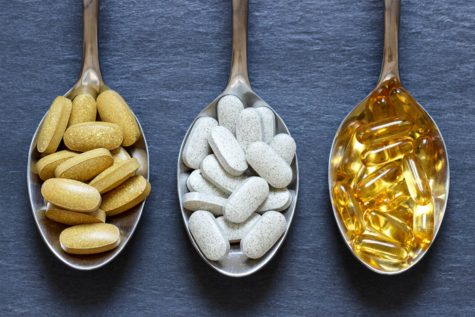
The word ‘ Vitamine’ meaning a vital amine was proposed by a Polish Researcher, Dr. Cacimir Funk, in 1911 to designate a new food substance which cured beri-beri. Other terms were proposed as new factors were discovered. But the word vitamin , with the final ‘e’ dropped, met with popular favor.
Vitamins are potent organic compounds which are found in small concentrations in foods. They perform specific and vital functions in the body chemistry. They are like electric sparks which help to run human motors. Except for a few exceptions, they cannot be manufactured or synthesized by the organism and their absence or improper absorption results in specific deficiency disease.
It is not possible to sustain life without all the essential vitamins. In their natural state they are found in minute quantities in organic foods. We must obtain them from these foods or in dietary supplements.
Vitamins, which are of several kinds, differ from each other in physiological function, in chemical structure and in their distribution in food. They are broadly divided into two categories, namely, fat-soluble and water-soluble.
Vitamins A, D, E and K are all soluble in fat and fat solvents and are therefore, known as fat-soluble. They are not easily lost by ordinary cooking methods and they can be stored in the body to some extent, mostly in the liver. They are measured in international units.
Vitamin B Complex and C are water soluble. They are dissolved easily in cooking water. A portion of these vitamins may actually be destroyed by heating. They cannot be stored in body and hence they have to be taken daily in foods. Any extra quantity taken in any one day is eliminated as waste. Their values are given in milligrams and micrograms, whichever is appropriate.
Vitamins, used therapeutically, can be of immense help in fighting disease and speeding recovery. They can be used in two ways, namely, correcting deficiencies and treating disease in place of drugs. Latest researches indicate that many vitamins taken in large doses far above the actual nutritional needs, can have a miraculous healing effect in a wide range of common complaints and illnesses.
Vitamin therapy has a distinct advantage over drug therapy. While drugs are always toxic and have many undesirable side effects, vitamins , as a rule are non-toxic and safe. The various functions of common vitamins, their deficiency symptoms, natural sources, daily requirements and their therapeutic uses are discussed in brief as follows:
Vitamin A
Known as anti-opathalmic, vitamin A is essential for growth and vitality. It builds up resistance to respiratory and other infections and works mainly on the eyes, lungs, stomach and intestines. It prevents eye diseases and plays a vital role in nourishing the skin and hair. It helps to prevent premature ageing and senility, increases life expectancy and extends youthfulness.
The main sources of this vitamin are fish liver oil, liver, whole milk, curds, pure ghee, butter, cheese, cream and egg yolk, green leafy and certain yellow root vegetables such as spinach, lettuce, turnip, beets, carrot, cabbage and tomato and ripe fruits such as prunes, mangoes, papaya, apricots, peaches, almonds and other dry fruits.
A prolonged deficiency of vitamin A may result in inflammation of the eyes, poor vision frequent colds, night blindness and increased susceptibility to infections, lack of appetite and vigor, defective teeth and gums and skin disorders.
The recommended daily allowance of vitamin A is 5,000 international units for adults and 2,600 to 4,000 international units for children. When taken in large therapeutic doses, which are usually 25,000 to 50,000 units a day, it is highly beneficial in the treatment of head and chest colds, sinus trouble, influenza and other infectious diseases. It is also valuable in curing night blindness and other eye diseases as well as many stubborn skin disorders.
This vitamin can be given up to 1,00,000 units a day for a limited period of four weeks under doctor’s supervision. In a recent year-long study, huge doses of vitamin A given twice a year reduced death by about 30 per cent among Indonesian children. This has raised the hope in the fight against a significant cause of childhood mortality in developing countries.
B Complex Vitamins
There are a large variety of vitamins in the B group, the more important being B1 or thiamine, B2 or riboflavin, B3 or niacin or nicotinic acid, B6 or pyridoxine, B9 or folic acid, B12 and B5 or pantothenic acid. B vitamins are synergistic. They are more potent together than when used separately.
- Thiamine
Known as anti-beberi, anti-neuritic and anti-ageing vitamin, thiamine plays an important role in the normal functioning of the nervous system, the regulation of carbohydrates and good digestion. It protects heart muscle, stimulates brain action and helps prevent constipation. It has a mild diuretic effect.
Valuable sources of this vitamin are wheat germ, yeast, the outer layer of whole grains, cereals, pulses, nuts, peas, legumes, dark green leafy vegetables, milk, egg,banana and apple.
The deficiency of thiamine can cause serious impairment of the digestive system and chronic constipation, loss of weight, diabetes, mental depression, nervous exhaustion and weakness of the heart.
The recommended daily allowance for this vitamin is about two milligrams for adults and 1.2 mg. for children. The need for this vitamin increases during illness, stress and surgery as well as during pregnancy and lactation. When taken in a large quantity, say up to 50 mg, it is beneficial in the treatment of digestive disorders, neuritis and other nervous troubles as well as mental depression.
For best results, all other vitamins of B group should be administered simultaneously. Prolonged ingestion of large doses of any one of the isolated B complex vitamins may result in high urinary losses of other B-vitamins and lead to deficiencies of these vitamins.
- Riboflavin
Vitamin B2 or riboflavin, also known as vitamin G, is essential for growth and general health as also for healthy eyes, skin, nails and hair. It helps eliminate sore mouth, lips and tongue. It also functions with other substances to metabolize carbohydrates, fats, and protein.
The main sources of this vitamin are green leafy vegetables, milk, cheese, wheat germ, egg, almonds, sunflower, seeds, citrus fruits and tomatoes.
Its deficiency can cause a burning sensation in the legs, lips and tongue, oily skin, premature wrinkles on face and arm and eczema.
The recommended daily allowance for this vitamin is 1.6 to 2.6 mg. for adults and 0.6 to one mg for children. Its use in larger quantities, say from 25 to 50 mg. is beneficial in the treatment of nutritional cataracts and other eye ailments, digestive disturbances, nervous depression, general debility, and certain types of high blood pressure.
- Niacin
Vitamin B3 or niacin or nicotinic acid is essential for proper circulation, healthy functioning of the nervous system and proper protein and carbohydrate metabolism. It is essential for synthesis of sex hormones, cartisone, thyroxin and insulin. It is contained in liver, fish, poultry, peanut, whole wheat,green leafy vegetables, dates, figs, prunes and tomato.
A deficiency can lead to skin eruptions, frequent stools, mental depression, insomnia, chronic headaches, digestive disorders and anemia.
The recommended daily allowance is 12 to 20 mg. for adults and 4.8 to 12 mg. for children. Large doses of this vitamin say up to 100 mg. with each meal, preferably together with other B group vitamins, affords relief in case of migraine and high blood pressure caused by nervousness, high cholesterol and arteriosclerosis.
- Pyridoxine
Vitamin B 6 or pyridoxine is actually a group of substance – pyridoxine, pyridoxinal and pyridoxamine – that are closely related and function together. It helps in the absorption of fats and proteins, prevents nervous and skin disorders and protects against degenerative diseases.
The main sources of this vitamin are yeast, wheat, bran, wheat germ, pulses, cereals, banana, walnuts, soy beans , milk, egg, liver, meat and fresh vegetables. Deficiency can lead to dermatitis, conjunctivitis, anemia, depression, skin disorders, nervousness, insomnia, migraine headaches and heart disease.
The recommended daily requirement is 2.0 mg. for adults and 0.2 mg. for children. This vitamin used therapeutically from 100 to 150 mg. daily can relieve painful joints and the discomforts of pregnancy and pre-menstrual symptoms.
Vitamin B6 is now the most intensively studied of all vitamins. Researches are on the threshold of a number of promising developments involving treatments of various ailments with this vitamin. They include hyperactivity in children, asthma, arthritis, kidney stones, blood clots in heart attack victims and nervous disorders.
- Folic Acid
Vitamin B9 or folic acid, along with vitamin B12 is necessary for the formation of red blood cells. It is essential for the growth and division of all body cells for healing processes. It aids protein metabolism and helps prevent premature graying.
Valuable sources of this vitamin are deep green leafy vegetables such as spinach, lettuce, brewers yeast, mushrooms, nuts, peanuts and liver.
A deficiency can result in certain types of anemia, serious skin disorders, loss of hair, impaired circulation, fatigue and mental depression.
The minimum daily requirement of this vitamin is 0.4 mg. To correct anemia and deficiencies 5 mg or more are needed daily. Some authorities believe that folic acid is contraindicated in leukemia and cancer.
- Pantothenic Acid
Vitamin B5 or pantothenic acid helps in cell building, maintaining normal growth and development of the central nervous system. It stimulates the adrenal glands and increases the production of cortisone and other adrenal hormones. It is essential for conversion of fatty and sugar to energy. It also helps guard against most physical and mental stresses and toxins and increases vitality.
The main sources of this vitamin are whole grain bread and cereals, green vegetables,peas , beans, peanuts and egg yolk. It can be synthesized in the body by intestinal bacteria. A deficiency can cause chronic fatigue, hypoglycemia, graying and loss of hair, mental depression, stomach disorders, blood and skin disorders.
The minimum daily requirement of this vitamin has not been established, but is estimated to be between 30 and 50 mg a day. The usual therapeutic doses are 50 to 200 mg. In some studies, 1,000 mg or more were given daily for six moths without side effects. It is useful in the treatment of insomnia, low blood pressure and hypoglycemia or low blood sugar.
- Vitamin B12
Vitamin B12 or cobolamin, commonly known as “red vitamin” , is the only vitamin that contains essential mineral elements. It is essential for proper functioning of the central nervous system, production and regeneration of red blood cells and proper utilization of fat, carbohydrates and protein for body building. It also improves concentration, memory and balance.
Valuable sources of this vitamin are kidney, liver, meat, milk, eggs, bananas and peanuts. Its deficiency can lead to certain types of anemia, poor appetite and loss of energy and mental disorders.
The recommended daily allowance of this vitamin is 3 mcg. Taken in large therapeutic doses from 50 to 100 mcg., it is beneficial in the treatment of lack of concentration, fatigue, depression, insomnia and poor memory.
Vitamin C
Vitamin C or ascorbic acid is essential for normal growth and the maintenance of practically all the body tissues, especially those of the joints, bones, teeth, and gums. It protects one against infections and acts as a harmless antibiotic. It promotes healing and serves as protection against all forms of stress and harmful effects of toxic chemicals. It helps prevent and cure the common cold. It also helps in decreasing blood cholesterol.
This vitamin is found in citrus fruits, berries, green and leafy vegetables, tomatoes, potatoes, sprouted sprouted bengal (a variety of chickpea) and green grams (mung beans).
A deficiency can cause scurvy marked by weakness, anemia, bleeding gums and painful and swollen parts, slow healing of sores and wounds, premature ageing and lowered resistance to all infections.
The recommended daily allowance is 50 to 75 mg. for adults and 30 to 50 mg. for children. Smokers and older persons have greater need for vitamin C. It is used therapeutically in huge doses from 100 to 10,000 mg. a day.
It prevents and cures colds and infections effectively, neutralizes various toxins in the system, speeds healing processes in virtually all cases of ill health, increases sexual vitality and prevents premature ageing. According to Dr. Linus Pauling, a world famous chemist and nutrition expert, ” because vitamin C is one of the least toxic vitamins, it is very safe to use in high doses. ” Your body will take exactly what it needs and excrete any excess naturally.”
Vitamin D
Vitamin D is necessary for proper bone and teeth formation and for the healthy functioning of the thyroid gland. It assists in the assimilation of calcium, phosphorus and other minerals from the digestive tract.
This vitamin is found in the rays of the sun, fish, milk, eggs, butter and sprouted seeds. A deficiency can cause gross deformation of bones and severe tooth decay.
The recommended daily allowance of this vitamin for both adults and children is 400 to 500 international units. Therapeutically, up to 4,000 to 5,000 units a day for adult or half of this for children, is a safe dose, if taken for not longer than one month.
It is beneficial in the treatment of muscular fatigue, constipation and nervousness. It can be toxic if taken in excessive doses, especially for children. Signs of toxicity are unusual thirst, sore eyes, itching skin, vomiting, diarrhea, urinary urgency, abnormal calcium deposits in blood vessel walls, liver, lungs, kidneys and stomach.
Vitamin E
Vitamin E is essential for normal reproductive functions, fertility and physical vigor. It prevents unsaturated fatty acids, sex hormones and fat soluble vitamins from being destroyed in the body by oxygen. It dilutes blood vessels and improves circulation. It is essential for the prevention of heart diseases, asthma, arthritis, and many other conditions.
It is available in wheat or cereals germ, whole grain products, green leafy vegetables, milk, eggs, all whole, raw or sprouted seeds and nuts.
Its deficiency can lead to sterility in men and repeated abortions in women, degenerative developments in the coronary system, strokes and heart disease.
The official estimated requirement of this vitamin is 15 international units. Expert nutritionists estimate the actual requirement at 100 to 200 I.U. a day. The therapeutic doses are from 200 to 2400 I.U. daily.
It is beneficial in the treatment of various forms of paralysis, diseases of the muscles, atherosclerotic heart disease by diluting blood vessels. It prevents formation of scars in burns and post-operation healing. It protects against many environmental poisons in air, water and food. It also has a dramatic effect on the reproductive organs and prevents miscarriage, increases male and female fertility and helps to restore male potency.
Vitamin K
Vitamin K is necessary for the proper clotting of blood, prevention of bleeding and normal liver functions. It aids in reducing excessive menstrual flow.
This vitamin is contained in egg yolk, cow’s milk, yogurt, alfalfa, green and leafy vegetables, spinach, cauliflower, cabbage and tomato. Its deficiency can lead to sufficient bile salts in the intestines, colitis, lowered vitality and premature ageing.
About Healing With Color

Chromotherapy is a method of treatment of diseases by color. It is best used as a supportive therapy along with other natural methods of preserving health such as correct diet, adequate rest and relaxation, exercise, yogic asanas and so on. According to practitioners of chromotherapy, the cause of any disease can be traced to the lack of a particular color in the human system. color therapy is a technique of restoring imbalance by means of applying colored light to the body. It was a popular method of cure even in ancient times.
Some 2,500 years ago, Pythagoras applied color light therapeutically and ‘color halls’ were used for healing in ancient Egypt, China and India. The pioneer of modern color therapy was Niels Finsen of Denmark. Following the discovery, in 1877, of the bactericidal action of solar ultra-violet energy, Finsen studied the possibility of assisting the healing of wounds with visible light. He subsequently used red light to inhibit the formation of smallpox scars and, in 1896, founded a Light Institute ( now the Finsen Institute of Copenhagen) for the phototreatment of tuberculosis.
In 1932, Gerrard and Hessay, two Californian psychologists, scientifically established that blue light had a calming effect and red a stimulating power on human beings. Blue and red colors are considered at the two extremes with yellow representing the midpoint. These are also the three principal colors in a rainbow. A patient is first subjected to an examination to ascertain which color he lacks. The deficiency is determined by observing the color of the eyeballs, nails, urine and excrement. In cases of the lack of red the eyes and nails will be bluish, and the urine and excrement white or bluish. If there is a deficiency of the blue color, the eyes and nails will be reddish and urine and excrement yellowish or red.
Every substance on earth contains color. Even the rays cast on earth by celestial bodies contain color in the form of white light. The rays of the sun contain seven different colors violet, indigo, blue, green, yellow, orange and red. These are natural colors which are highly beneficial to the maintenance of health and for healing diseases.
According to Dr. Babbit, a well-known authority on chromotherapy, “sunlight is the principal curative agent in nature’s laboratory and where light cannot enter, disease does. Chlorosis, anemia, leukemia, emaciation, muscular debility, degeneration of heart and liver, dropsical effusion, softening of bones, nervous excitability, physical deformity, stunted growth and consumption are the result of excluding oneself from the beneficial effects of sunlight.”
Sunlight plays an important role in the recovery from chronic diseases. Judicious use of sunlight can be part of the curing process in almost every affliction. The rays of the sun improve digestion and nutrition, quicken blood and lymph circulation and increase the elimination of impurities through the skin.
The action and effect of various colors on the body:
If this interests you, the Color Therapy site here at shirleytwofeathers.com has a wealth of information on color.
- Red
Symbolic of heat, fire and anger. It is a stimulating and energizing color. It stimulates arterial blood and brings warmth to cool extremities. Used as a general tonic, it is very valuable in the treatment of diseases like low blood pressure, rheumatism, paralysis, anemia and advanced cases of tuberculosis.
- Orange
Symbolic of prosperity and pride, orange is useful for stimulating blood supply and energizing the nerves. It is beneficial in the treatment of kidney and gall stones, hernia and appendicitis. It is also used to stimulate the milk producing action of breasts after childbirth.
- Violet
Violet is beneficial in the treatment of nervous and emotional disturbances, arthritis, acute cases of consumption and insomnia.
- Yellow
Associated with joy and happiness, yellow is laxative and diuretic. It is a stimulant to the brain, the liver and the spleen. It is also effective in the treatment of diabetes, indigestion, kidney and liver disorders, constipation, eye and throat infections, syphilis and impotence.
- Purple
Purple or indigo combines the blood-warming red and the cooling antiseptic blue. It is an excellent stimulant without being an irritant. It is beneficial in the treatment of advanced stages of constipation, hydrocle, leucorrhoea, many disorders of the stomach and womb , cataract , migraine and skin disorders. It exerts a soothing effect on the eyes, ears and the nervous system.
- Green
Made up of the blue and yellow, green is regarded as a color of harmony. It is a mild sedative. It is useful in the treatment of nervous conditions, hay fever, ulcers, influenza, malaria , colds, sexual disorders and cancer. It preserves and strengthens eyesight. Being highly medicinal and depressive, it is of great help in the treatment of inflammatory conditions.
- Blue
Cool, soothing and sedative, blue alleviates pain, reducing bleeding and heals burns. It is beneficial in the treatment of dysentery, colic, asthma, respiratory disorders, high blood pressure and skin aberrations. In a study at the New England State Hospital in the United States, 25 members of staff with normal blood pressure were bathed in blue light for half an hour. It resulted in universal fall in blood pressure. The blood pressure rose when red light was applied.
Methods of Treatment
There are two methods of treating diseases by color : By the application of light through different colored glasses ; and by external or internal use of color-charged water.
In the first method, sheets of glass, 30 cms. X 36 cms. of the required colors are needed. These are placed at the window frames or any other convenient place in such a way that the sun’s rays can pass through them and fall directly on the patient’s body. The usual duration of the color treatment is 30 minutes.
In case of local application, a pane of glass can be placed in front of the diseased part so that the light passing through the glass falls on the afflicted area. At night lanterns can be used for the purpose. A single lantern can have glass panes of four different colors and the required color can be focused on the patient or the affected parts.
In the second method, colored bottles are needed. These bottles should be cleaned and filled up to three-fourths level with fresh well water, distilled water or rain water. The bottles should be corked and then placed in bright sunlight for three to four hours. After this exposure, the water is said to acquire medicinal properties and this color-charged water can be used both internally and for external applications.
Wounds and ulcers can be washed with this water and it can also be used to massage the affected parts or applied as compress on them. For internal use, an adult can take 30 ml. of color-charged water as a single dose. The dose can be repeated as required.
Diet
A correct and balanced diet is essential during the treatment of diseases through chromotherapy. The patients should take food items with analogous coloring. The various colors contained in different food items are :
- Red : Beets, radish, red cabbage, tomatoes, watercress, most red-skinned fruits,red berries and water melon.
- Orange : Orange-skinned vegetables and fruits such as carrot, orange, apricot, mango, peach and papaya.
- Violet : Egg plant, berries, black carrot and purple grapes.
- Yellow : Lime and lemon, sweet lime, grapes, pumpkin, melon, banana, mango, yellow apple and guava.
- Purple : Foods having both blue and violet coloring.
- Green : Most of the green vegetables and fruits such as gourds, spinach, plantain, lettuce, pea, green mango, gooseberry, pears, beans , etc.
- Blue : Blue plum, blue beans, blue grapes, etc.
Contraindications
There are some important contraindications to color treatment which should be borne in mind while adopting this mode of cure. For instance, the red color would be injurious in a naturally inflammatory condition of the system, and in case of persons with feverish and excitable temperament. If the red light is employed for too long and frequently, it may produce dangerous fevers. The danger can be obviated by using the red light for a few minutes at a time or by placing a wet bandage over the head.
Similarly, yellow should not be used when the nerves are very active or irritable. Yellow or orange reddish tones may prove injurious in fevers, acute inflammations, delirium, diarrhea, neuralgia, palpitation of the heart and any condition of over- excitement.
In cases of paralysis, chronic rheumatism, gout, consumption and in all cold, pale and dormant conditions of the system, blue, indigo and violet may prove too cooling and constricting and should be avoided.
Pranayama
Prana means ‘ vital force ‘ and Ayama means ‘ control ‘ in Sanskrit. Thus Pranayama means the control of the vital force through concentration and regulated breathing. By means of controlled breathing that is, inhaling and exhaling by holding the breath for a fixed time and changing the rhythm of inspiration and expiration, it is possible to influence the life-force in the body. Pranayama is the process by which such conscious control is achieved through controlled and rhythmical breathing .
Pranayama purifies the channels along which the life stream of ‘prana’ flows in the body and prevents various disorders. It increases one’s resistance to respiratory diseases. The best position in which to practice pranayama is the padmasana or lotus pose.
If for some reason that position is difficult to adopt, it can be done while sitting in any comfortable pose. The important thing is to keep the back, neck and head in a straight line. The body should be in its natural relaxed condition and this can be achieved by resting a few minutes in shavasan. If necessary, use your right finger and thumb on either side of the nose to control the right and left nostrils during inhalation and exhalation.
In practicing pranayama, a ratio of two to one should be maintained throughout, that is, the exhalation time should be double that required for inhalation. For instance, if inhalation takes 5 seconds, exhalation should take 10 seconds. Both inhalation and exhalation should be smooth and quiet.
Some varieties of pranayama beneficial in the treatment of common ailments are as follows :
- Anuloma-viloma
This is also known as Nadishuddhi pranayama. Sit in any comfortable meditative pose, keeping your head,neck and spine erect. Rest your left hand on your left knee. Close your right nostril by pressing the tip of your right thumb against it. Breathe out slowly through the left nostril. Inhale slowly and deeply through the left nostril, keeping the right nostril closed. Close your left nostril with the little finger and ring finger of your right hand and exhale through the right nostril. Then inhale through the right nostril, keeping the left nostril closed and, lastly, exhale through the left nostril, keeping the right nostril closed.
This completes one round of anuloma-viloma. Repeat the entire process. Inhaling and exhaling should be done very slowly, without making any sound. This pranayama is a process of purification. It strengthens the lungs and calms the nerves. It helps cure cough and cold, insomnia, chronic headache and asthma.
- Ujjayi
Sit in any comfortable meditative pose. Inhale slowly, deeply and steadily through both nostrils with a low uniform sound through the glottis. Hold your breathe for a second or two after inhaling and then exhale noisily only through the left nostril, keeping the right nostril closed. Do this as often as required.
This pranayama clears the nasal passage and helps the functioning of the thyroid gland and benefits respiratory disorders, especially bronchitis and asthma. Persons suffering from high blood pressure should not practice ujjayi.
- Bhastrika
‘Bhastrika’ means ‘bellows.’ It is performed by instant and quick expiration of breath. There are many varieties of bhastrika. The simplest technique is as follows :
Sit in padmasana. Do 20 strokes of kapalbhati. Inhale and exhale rapidly, making a puffing sound. This is a good exercise for abdominal viscera and lungs.
- Sheetali
Sit in padamasana or any other comfortable posture. Stick your tongue out about an inch from the lips, rolled up at the sides to form a channel like a bird’s beak. Suck in air through the channel. After a full inhalation, slowly close your mouth, hold your breath and exhale slowly through both nostrils. This completes the exercise. Repeat as required.
This pranayama cools the body and mind, activates the liver and bile and has beneficial effects on the circulation and body temperature.
- Sitkari
In sitkari a sound is produced while inhaling by opening the mouth a little, placing the tip of the tongue against the lower front teeth and then sucking the air in slowly. After holding your breath, exhale through both nostrils. This exercise helps to control thirst, hunger and laziness.
- Suryabhedan
‘Surya-nadi ‘ is the right nostril and ‘ChandraNadi’ is the left nostril. In this pranayama, one always uses the right nostril for inhalation. Sit in padmasan or any other suitable posture. Keep your head, neck and back straight. Inhale through the right nostril. Hold your breath and then exhale through the left nostril. Hold your breath and then exhale through the left nostril. Repeat as often as required.
This pranayama increases gastric juices and helps digestion. It also fortifies the nervous system and clears the sinuses.
- Bhramari
In this pranayama, the buzzing sound of a bee is produced and hence it is called bhramari. Keep your mouth closed while inhaling. Exhale through both nostrils, producing the humming sound of a bee. This pranayama affects the ears, nose, eyes and mouth and makes the complexion glow. It also helps those suffering from insomnia.
Yoga Asanas
 All yogic exercises should be performed on a clean mat, a carpet or a blanket covered with a cotton sheet. Clothing should be light and loose-fitting to allow free movement of the limbs. The mind should be kept off all disturbances and tensions. Regularity and punctuality in practicing yogic exercises is essential. Generally, 5 a.m. to 8 a.m. is the ideal time for yoga practices.
All yogic exercises should be performed on a clean mat, a carpet or a blanket covered with a cotton sheet. Clothing should be light and loose-fitting to allow free movement of the limbs. The mind should be kept off all disturbances and tensions. Regularity and punctuality in practicing yogic exercises is essential. Generally, 5 a.m. to 8 a.m. is the ideal time for yoga practices.
Asanas should always be practiced on an empty stomach. Shavasana should be practiced for a brief period before starting the rest of the exercises as this will create the right mental condition. Asanas should be performed at a leisurely slow-motion pace, maintaining poise and balance.
Yoga asana techniques are greatly enhanced if you have the help of a competent teacher.
- Asanas Shavasana ( Dead body pose )
Lie flat on your back, feet comfortably part, arms and hands extended about six inches from the body, palms upwards and fingers half-folded. Close your eyes. Begin by consciously and gradually relaxing every part and each muscle of the body ; feet, legs, calves, knees, thighs, abdomen, hips, back, hands, arms, chest,shoulders, neck, head and face. Relax yourself completely feeling as if your whole body is lifeless.
Now concentrate your mind on breathing rhythmically as slowly and effortlessly as possible. This creates a state of complete relaxation. Remain motionless in this position, relinquishing all responsibilities and worries for 10 to 15 minutes. Discontinue the exercise when your legs grow numb.
This asana helps bring down high blood pressure, and relieves the mind, particularly for those who are engaged in excessive mental activity. This exercise should be done both at the beginning and at the end of the daily round of yogic asanas. During a fast, shavasana soothes the nervous system.
- Padmasana ( Lotus pose )
Sit erect and stretch your legs out in front of you. Bend one leg to place the foot on the thigh of the other, the sole facing upwards. Similarly, bend the other leg too, so that the heels are opposite each other and placed in such a way that they press down on the other side of the groin. Keep your neck, head and spine straight. Place your palms one upon the other, both turned upward and cupped, and rest them on the upturned heels a little below the navel.
Padmasana is a good pose for doing pranayama and meditation. It helps in the treatment of many heart and lung diseases and digestive disorders. It also calms and refreshes the mind.
- Yogamudra
Sit erect in padmasana. Fold your hands behind your back, holding your left wrist with the right hand. Take a deep breath. While exhaling, bend forward slowly keeping your hands on your back. Bring your face downwards until your nose and forehead touch the floor. While inhaling , slowly rise back to the upright position.
The practice of this asana tones up the nervous system, builds up powerful abdominal muscles and strengthens the pelvic organs. It helps pep up digestion, boosts the appetite and removes constipation. It tones up and relaxes the nerves of the head and face. It also strengthens the sex glands.
- Vajrasana ( Pelvic pose )
Sit erect and stretch out your legs. Fold your legs back, placing the feet on the sides of the buttocks with the soles facing back and upwards. Rest your buttocks on the floor between your heels. The toes of both feet should touch. Now, place your hands on your knees and keep the spine, neck and head straight.
Vajrasana can be performed even after meals. It improves the digestion and is beneficial in cases of dyspepsia, constipation, colitis, seminal weakness and stiffness of the legs. It strengthens the hips, thighs, knees, calves, ankles and toes.
- Shirshasana ( Topsyturvy pose )
Shirsha means ‘head’. In this asana, one stands on one’s head. Kneel on the ground, interlocking the fingers of both hands. Place the ‘ finger-lock ‘ on the ground in front of you, keeping the elbows apart. Support your head on the finger-lock. Start raising your knees one at a time, to chest level. Then raise your feet slowly so that the calf muscles touch the thighs. Breathe normally. This is the first stage which should be done perfectly as the balance of the final posture depends mainly on this stage.
Next, raise your knees first and then slowly raise the feet so that the whole body is straight, like a pillar. This is the final pose. Return to the original position by reversing the order, step by step. This asana should not be done jerkily.
The important factor in shirshasana is mastering the balance, which comes through gradual practice. For proper balance, elbows should be placed firmly on the ground, alongside the finger-lock. Initially the asana should be done for 60 seconds only. The duration may be gradually increased by a further 10 seconds each week.
Regular practice of shirshasana will benefit the nervous, circulatory, respiratory, digestive, excretory and endocrine systems. This asana helps cases of dyspepsia, seminal weakness, varicose veins, arteriosclerosis, jaundice, renal colic and congested liver. Those suffering from oozing from the ears, iritis, high blood pressure or a weak heart should not practice this asana.
- Viparitakarani ( Inverted action pose )
Lie flat on your back, with your feet together and arms by your side. Press your palms down, raising your legs to a perpendicular position without bending the knees. Your palms should touch the waist. Then straighten your legs. The trunk should not make a right angle with the ground but simply an upward slanting position. The chest should not press against the chin but be kept a little away.
To return to the ground, bring your legs down slowly, evenly balancing your weight. Through this asana, the muscles of the neck become stronger and blood circulation is improved. The functioning of the cervical nerves, ganglia and the thyroid also gets improved.
- Sarvagasana ( Shoulder stand pose )
In Sanskrit ‘sarva’ means whole and ‘anga’ means limb. Almost all parts of the body are involved in and benefit from this asana. Lie flat on your back with your arms by the side, palms turned down. Bring your legs up slowly to a 90° angle and then raise the rest of the body by pushing the legs up and resting their raise the rest of the body by pushing the legs up and resting their weight on the arms. Fix your chin in jugular notch, and use your arms and hands to support the body at the hip region.
The weight of the body should rest on your head, back and shoulders, your arms being used merely for balance. The trunk and legs should be in a straight line. The body, legs , hips and trunk should be kept as vertical as possible. Focus your eyes on your big toes. Press your chin against your chest. Hold the pose for one to three minutes. Return to the starting position slowly reversing the procedure.
Sarvangasana helps relieve bronchitis, dyspepsia, varicose veins and peps up the digestion. It stimulates the thyroid and para-thyroid glands, influences the bran, heart and lungs. It helps lymphatic juices to circulate in the brain and strengthens the mind. This asana should not be done by those suffering Viparitkarani from high blood pressure, heart disease and eye trouble.
- Matsyasana (Fish pose )
Sit in Padmasana. Bend backwards and lie flat on your back without raising your knees. Press your palms beneath the shoulder. Push the hip backwards thus making a bridge -like arch with the spine. Then making hooks of your forefingers, grasp your toes without crossing your arms. Maintain this pose and breathe rhythmically and comfortably. Reverse the order and return gradually to the starting position of Padamasana.
Matsyasana is beneficial in the treatment of acidity, constipation, diabetes, asthma, bronchitis and other lung disorders.
- Uttanapadasana ( Left-lifting pose)
Lie on your back with leg and arms straight, feet together, palms facing downwards, on the floor close to the body. Raise your legs above two feet from the floor without bending your knees. Maintain this pose for some time. Then, lower your legs slowly without bending the knees. This asana is helpful for those suffering from constipation. It strengthens the abdominal muscles and intestinal organs.
- Halasana ( Plough pose )
Lie flat on your back with legs and feet together, arms by your side with fists closed near your thigh keeping your legs straight, slowly raise them to angles of 300, 600 and 900, pausing slightly at each point. Gradually, raise your legs above your head without bending your knees and then move them behind until they touch the floor. Stretch your legs as far as possible so that your chin presses tightly against the chest while your arms remain on the floor as in the original position. Hold the pose from between 10 seconds to three minutes, breathing normally. To return to the starting position slowly reverse the procedure.
This asana relieves tension in the back, neck, and legs and is beneficial in the treatment of lumbago, spinal rigidity and rheumatism, myalgia, arthritis, sciatica and asthma.
- Bhujangasana ( Cobra pose )
Lie on your stomach with your legs straight and feet together, toes pointing backwards. Rest your forehead and nose on the ground. Place your palms below the shoulders and your arms by the side of the chest. Inhale and slowly raise your head, neck, chest and upper abdomen from the navel up. Bend your spine back and arch your back as far as you can looking upwards. Maintain this position and hold your breathe for a few seconds. Exhale, and slowly return to the original position.
This asana has great therapeutic value in the treatment of diseases like cervical spondylitis, bronchitis, asthma and eosinophillia. It removes weakness of the abdomen and tones up the reproductive system in women. It exercises the vertebrae, back muscles and the spine.
- Shalabhasana ( Locust pose )
Lie flat on your stomach, with your legs stretched out straight, feet together, chin and nose resting on the ground, looking straight ahead. Move your arms under the body, keeping them straight, fold your hands into fists and place them close to the thighs. Now, raise your legs up keeping them straight together and stretching them as far back as possible without bending your knees and toes. Hold this position for a few seconds and repeat four or five times.
This asana helps in the treatment of arthritis, rheumatism and low backache. The whole body is strengthened by this asana especially the waist, chest, back and neck. Persons suffering from high blood pressure or heart disease should not practice this asana.
- Dhanurasana ( Bow pose )
Lie on your stomach with your chin resting on the ground, arms extended alongside the body with the legs straight. Bend your legs back towards the hips, bring them forward and grasp your ankles. Inhale and raise your thighs, chest and head at the same time. Keep your hands straight. The weight of the body should rest mainly on the navel region. Therefore, arch your spine as much as possible. Exhale and return slowly to the starting position, by reversing the procedure.
Dhanurasana provides good exercise for the arms, shoulders, legs, ankles, back and neck. It also strengthens the spine. It relieves flatulence and constipation and improves the functioning of the pancreas and the intestines. It should not be done by those with a weak heart, high blood pressure and ulcers of the stomach and bowels.
- Makarasana ( Crocodile pose )
Lie flat on your abdomen. Spread your legs, with heels pointing towards each other. Bring your left hand under the right shoulder and grasp it. Grasp the left shoulder with your right hand, keeping the elbows together, one upon the other on the ground. Your face should be between your crossed hands. Relax and breathe normally for two or three minutes. Then gradually go back to the sitting position. This asana completely relaxes both the body and the mind and also rests the muscles. It is beneficial in the treatment of hypertension, heart disease and mental disorders.
- Vakrasana
Sit erect and stretch legs out. Raise your right knee until your foot rests by the side of the left knee. Place your right hand behind your back without twisting the trunk too much. Then bring your left arm from in front of you over the right knee. Place your left palm on the ground near the heel of your right foot. Push your knee as far as to the left arm. Twist your trunk to the right as much as possible. Turn your face to the right over the right shoulder. Release and repeat on the left side.
This asana tones up the spinal and abdominal muscles and nerves and activates the kidneys, intestines, stomach, adrenaline and gonad glands. It relieves cases of constipation and dyspepsia.
- Ardhamatsyendrasana
This is the half position of Matsyendrasana, which is named after the great sage Matsyendra. Sit erect on the ground, stretching your legs in front of you. Insert your left heel in the perineum, keeping the left thigh straight. Place your right foot flat on the floor, crossing the left knee. Pass your left arm over the right knee and grasp the big toe of your right foot. Grasp your left thigh from the rear with your right hand. Turn your head, neck, shoulders and trunk to the right bringing your chin in line with the right shoulder. Maintain this position for a few seconds, gradually increasing the duration to 2 minutes. Repeat the same process on the other side for the same duration.
This asana exercises the vertebrae and keeps them in good shape. It helps the liver, spleen, bladder, pancreas, intestines and other abdominal organs, and also stretches and strengthens the spinal nerves. This asana is beneficial in the treatment of obesity, dyspepsia, asthma and diabetes.
- Paschimottanasana (Posterior stretching pose )
Sit erect. Stretch your legs out in front of you, keeping them close to each other. Bend your trunk and head forward from the waist without bending your knees and grasp the big toes with your rest your forehead on your knees. With practice, the tense muscles become supple enough for this exercise. Old persons and persons whose spine is still should do this asana slowly in the initial stages. The final pose need be maintained only for a few seconds. Return to the starting position gradually.
Paschimottanasana is a good stretching exercise in which the posterior muscles get stretched and relaxed. It relieves sciatica, muscular rheumatism of the back, backache, lumbago and asthmatic attacks. It is also valuable in constipation, dyspeptics and other abdominal disorders.
- Gomukhasana ( Cow-face pose )
Sit erect on the floor, with your legs outstretched. Fold your leg back. Place your left foot under the right hip. Similarly, fold back the right leg and cross your right foot over your left thigh. Place your right heel against the left hip. Both soles should face backwards, one over the other. Now interlock your hands behind your back. See to it that if your right leg is over the left, then your right elbow should face upward and the left elbow downward. This position is reversed when the leg position is changed. Hold the pose for 30 seconds and then repeat the procedure reversing the process.
The practice of gomukhasana will strengthen the muscles of the upper arm, shoulder, chest, back, waist and thigh. It is beneficial in the treatment of seminal weakness, piles, urethral disorders and kidney troubles. It also relieves varicose veins and sciatica.
- Pavanmuktasana ( Gas-releasing pose )
Lie flat on your back, hands by your side. Fold your legs back, placing your feet flat on the floor ; make a finger-lock with your hands and place them a little below the knees. Bring your thighs up near your chest. Exhale and raise your head and shoulders and bring your nose between your knees. This is the final position. Maintain this pose for a few seconds and repeat three to five times. Reverse the procedure to get back to the original position.
This asana strengthens the abdominal muscles and internal abdominal organs like the liver, spleen, pancreas and stomach. It helps release excessive gas from the abdomen and relieves flatulence. Persons suffering from constipation should do this exercise in the morning after drinking lukewarm water to help proper evacuation of the bowels.
- Chakrasana ( Lateral bending pose )
Stand straight with your feet and toes together and arms by your sides, palms facing and touching the thighs. Raise one arm laterally above the head with the palm inwards up to shoulder level and palm upwards when the arm rises above the level of your head. Then, bend your trunk and head sideways with the raised arm touching the ear, and sliding the palm of the other hand downwards towards the knee. Keep your knees and elbows straight throughout. Maintain the final pose for a few seconds. Then gradually bring your hand back to the normal position. Repeat the exercise on the other side.
This asana induces maximum stretching of the lateral muscles of the body, especially the abdomen. It strengthens the knees, arms and shoulders and increases lung capacity.
- Trikonasana ( Triangle pose )
Stand erect, with your legs apart. Stretch your arms up to shoulder level. Bend your trunk forwards and twist to the left, looking upwards and keeping your left arm raised at an angle of 900. Place your right palm on your left foot without bending the knees. Maintain this pose for a few seconds. Then straighten up and return to the normal position. Repeat the procedure on the other side.
Trikosana is an all-round stretching exercise. It keeps the spinal column flexible and reduces the fat on the lateral sides of the body. Besides, it stimulates the adrenal glands and tones up the abdominal and pelvic organs.
About Yoga Therapy
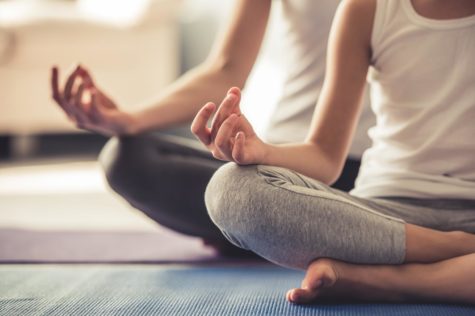
The Yoga Therapy or ‘ yoga-chikitsa’ refers to the treatment of diseases by means of yogic exercises which may be physical or mental or both. It is a specialized form of yogic culture. This mode of treatment has been practiced in India from very ancient times. Many references to yoga have been made in the Upanishads. It was, however, Maharishi Patanjali who in about the first century B.C. gave a systematic account of the traditional yogic teaching.
The term ‘ Yoga’ is derived from the Sanskrit root ‘yug’ which means “to join” . It signifies union between the individual soul (jivatma) and the universal soul (parmatma). It aims at obtaining relief from pain and suffering. Basically, human evolution takes place on three different planes, namely physical, mental and spiritual. Yoga is a means of attaining perfect health by maintaining harmony and achieving optimum functioning on all three levels through complete self-control.
Yogic kriyas, asanas and pranayama constitute the physical basis of yoga. More information about them can be found here:
The practice of kriyas and asanas leads to excellent circulation. It also energizes and stimulates major endocrine glands of the body. Yogic exercises promote inner health and harmony, and their regular practice helps prevent and cure many common ailments. They also help eliminate tensions, be they physical, mental or emotional.
Pranayama slows down the ageing process. In ordinary respiration, one breathes roughly 15 times a minute, taking in approximately 20 cubic inches of air. In pranayama the breathing rate is slowed down to once or twice a minute and the breath inhaled is deep and full, taking nearly 100 cubic inches of air.
All yogic exercises should be performed on a clean mat, a carpet or a blanket covered with a cotton sheet. Clothing should be light and loose-fitting to allow free movement of the limbs. The mind should be kept off all disturbances and tensions. Regularity and punctuality in practicing yogic exercises is essential. Generally, 5 a.m. to 8 a.m. is the ideal time for yoga practices.
Asanas should always be practiced on an empty stomach. Shavasana should be practiced for a brief period before starting the rest of the exercises as this will create the right mental condition. Asanas should be performed at a leisurely slow-motion pace, maintaining poise and balance.
Yoga asanas and pranayama techniques are greatly enhanced if you have the help of a competent teacher.
